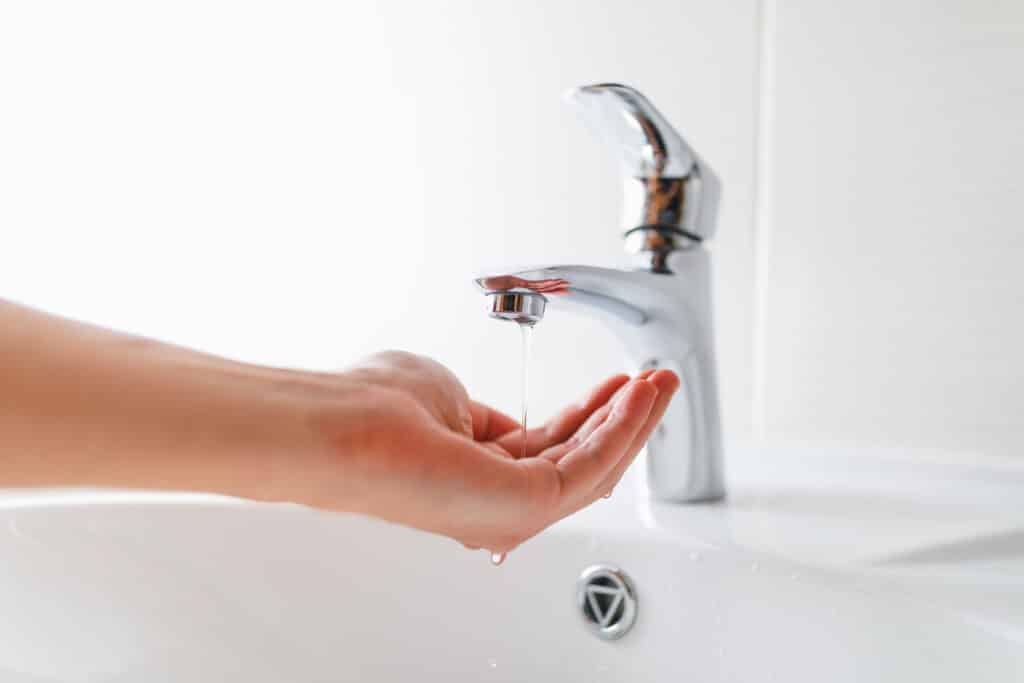
Having running water is one of the most important things in the home and if you find that you are suffering from low or no water pressure, it can be a big problem. This is why it is so important to check for issues with your water pressure and supply and get it sorted as quickly as you can if you notice there is an issue.
What can cause low or no water pressure?
There is a myriad of reasons why you might be experiencing low water pressure in your home. This includes:
Faulty fixtures
If you are experiencing low water pressure in your shower, for example, this could be because the showerhead is clogged. Ensure that you clean it out regularly to avoid the issue and replace it if the problem keeps happening.
A faulty pressure regulator
In your home, your water pressure is often stabilised and monitored through a pressure regulator. If this isn’t working as it should, it could cause your pressure to be too low or too high.
Clogged pipes
Clogged pipes are a common reason for your water pressure to falter. In order to fix the issue, get a drain cleaner, or hire a professional to see if your pipes need replacing completely.
Too much local water demand: If you live somewhere such as a block of flats and you are all using water at the same time, sometimes it can cause water pressure issues. Wait and try again in a few minutes to see if the issue has rectified itself.
Corroded plumbing
If you have tried unblocking your pipes to no avail, it might be that your whole plumbing system has corroded over time. The material of your pipes can dictate how long they last, with galvanized steel pipes lasting between 20-50 years and brass, copper and iron ones lasting anywhere between 40-100. If you currently reside in an older property, it could be that your pipes have never been replaced and have simply worn away over time. It is a good idea to consult with a professional who can help you to replace your plumbing and identify if this is the root cause of your water pressure.
How do I check the water pressure in my home?
Test the rate of your water pressure
An easy trick to measure your water pressure at home can be done using just a one-litre jug and a timer. Turn off all your taps and ensure that none of your appliances that use water are in use. You will then need to turn on your cold tap in your kitchen to full and time the amount of time it takes to fill the jug. The average time for this is seven seconds and if it is less than that, it can indicate a lower than normal water pressure level.
What to do in the event of low or no water pressure in your home
If you go to have a shower or turn on your taps and find that you don’t have any water pressure, try not to panic. There are a few different things that you can do which can help to identify and fix the problem.
Check how many sources in your home are suffering from the issue
When trying to source the cause of the low water pressure, you need to establish where it is coming from. If only one appliance or area is suffering, it is likely to be localised to just that specific plumbing fixture or pipe. This could mean an easy fix, indicating that it is not too serious. Go around your home checking each appliance and sink, testing both cold and hot temperatures and looking out for any differences in pressure between the two.
See if anyone else in your area has a similar problem
There are many resources you can check to see if your water pressure issue is localised to just your home or further afield. Try posting in local social media groups or checking interactive maps to see where the root of the problem is.
Check your internal stop tap
Your internal stop tap is what is used to control the water supply for your property and is usually found under the kitchen sink. Check that it is fully open and if not, turn it gently to see if it improves the water pressure.
Check for any leaks
Leaks in your household appliances can cause your water pressure to fall, so it is a good idea to check all appliances such as your dishwasher, fridge and washing machine. If there are any leaks, get these fixed and see if that sorts the problem.
If you are experiencing low or no water pressure, get in touch with us at Bishops Plumbers today. Our qualified plumbers can identify the issue and help to get your water back up and running in no time at all.
